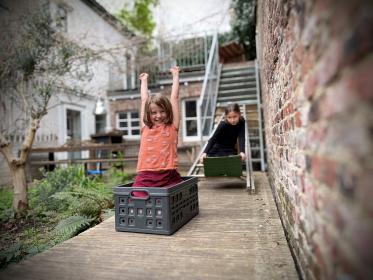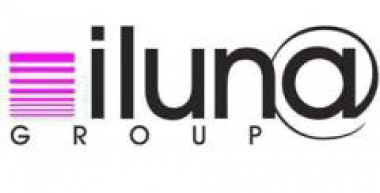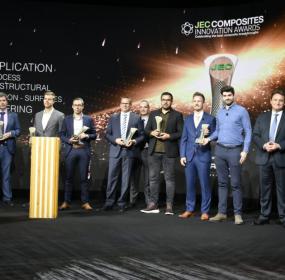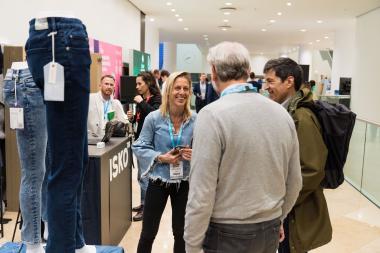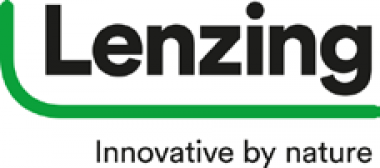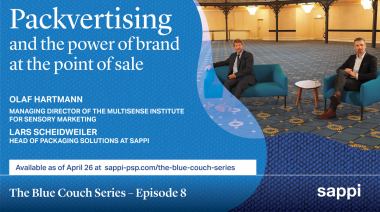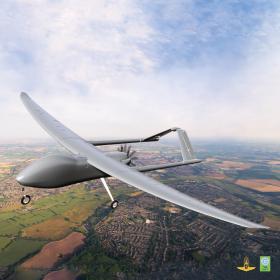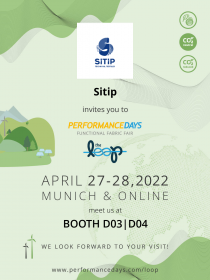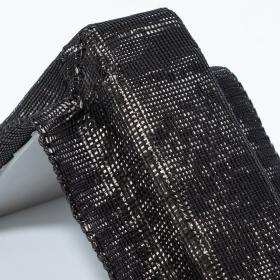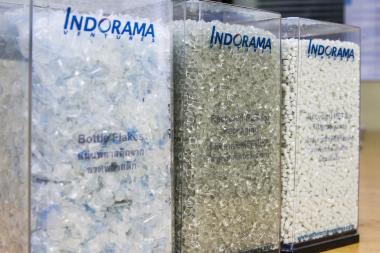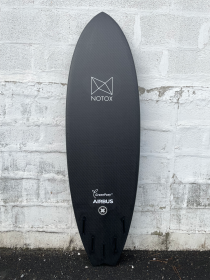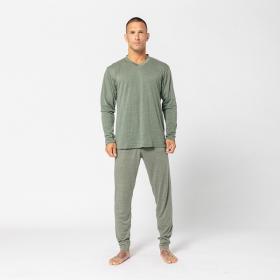Mehr Mehrweglösungen für Kunststoffverpackungen
Damit Plastikabfall reduziert wird und eine Kreislaufwirtschaft funktionieren kann, sind Mehrwegsysteme essenziell. Forschende des Fraunhofer UMSICHT und des Fraunhofer IML, die im Fraunhofer Cluster of Excellence Circular Plastics Economy CCPE zusammenarbeiten, haben für die Stiftung Initiative Mehrweg (SIM) drei kunststoffbasierte Mehrwegsysteme mit ihren Einwegalternativen verglichen. Das Ergebnis: Mehrweg ist Einweg in 14 der 17 untersuchten Kategorien überlegen und bietet großes Potenzial zum Gelingen einer Kreislaufwirtschaft. Was fehlt, sind klare politische Rahmenbedingungen und die Umsetzung der bestehenden Abfallhierarchie, die Mehrweg eigentlich priorisiert.
Nur 13 Prozent der in Deutschland produzierten Kunststoffe werden aus Rezyklaten hergestellt, im Verpackungsbereich sind es sogar nur 11 Prozent. Außerdem wird nur ein sehr geringer Teil für den ursprünglichen Zweck wiederverwendet, in der Regel dominieren Kaskadennutzungen (Downcycling). Darüber hinaus ist Deutschland einer der größten Exporteure von Plastikmüll weltweit. EU und Bundesregierung haben auf die Kunststoffproblematik reagiert: Die Produktion einiger Einwegplastikprodukte ist verboten, für PET-Getränkeflaschen wurde eine Rezyklatquote vorgeschrieben, und seit Anfang 2022 ist die Pfandpflicht für Einweggetränkeflaschen auf sämtliche Getränkearten ausgeweitet worden. »Green Deal und Taxonomie-Verordnung der EU geben die richtige Richtung für ein nachhaltiges Wirtschaften vor. Aus unserer Sicht gibt es aber folgendes Problem: Die im europäischen Abfallrecht seit Jahrzehnten geregelte Abfallhierarchie definiert eine Rangfolge bei Erzeugung und Umgang mit Kunststoffabfällen. Darin ist das Recycling der Mehrfachnutzung nachgelagert. Die Umsetzung dieser Abfallhierarchie findet bislang aber kaum statt.«, erklärt Jürgen Bertling vom Fraunhofer-Institut für Umwelt-, Sicherheits- und Energietechnik UMSICHT und Projektleiter der Studie.
Zirkularität, Performance und Nachhaltigkeit
Insbesondere für Kunststoffverpackungen existieren derzeit vorwiegend Einweglösungen. Einige Mehrwegsysteme finden sich im B2B-Bereich z. B. in der Automobilindustrie und beim Obst- und Gemüsetransport. Im B2C-Bereich sind sie eher die Ausnahme wie z. B. die Transportkisten für Lebensmittel vom regionalen Bauern. Ziel der aktuellen Studie des Fraunhofer CCPE im Auftrag der Stiftung Initiative Mehrweg war es daher, kunststoffbasierte Mehrwegverpackungssysteme zu bewerten, sie mit Einwegalternativen zu vergleichen und Empfehlungen für eine Stärkung der Kreislaufwirtschaft abzuleiten. Dazu analysierten die Forschenden die drei Mehrwegsysteme Obst- und Gemüsesteigen (bereits im Handel etabliert), Pflanzentrays (in Vorbereitung für einen großflächigen Einsatz) und Coffee-to-go-Becher (Einführungsphase). Sie wurden mit den jeweils entsprechenden Einweglösungen in den drei Bereichen Zirkularität, Performance und Nachhaltigkeit in insgesamt 17 Unterkategorien verglichen. Das Ergebnis: Mehrweg bietet für alle drei untersuchten Demonstratoren klare Vorteile – von der Materialeffizienz über geringere Kunststoffemissionen bis hin zu einem besseren Produktschutz durch robustere Ausführungen.
Mehrweg bedeutet für Unternehmen zwar zunächst einen höheren Kapitaleinsatz durch den Aufbau von Logistik und Rückfuhrsystemen, Lagerflächen und Reinigungstechnik. Langfristig erweisen sich Mehrwegsysteme jedoch als preiswerter und ressourcenschonender, sie stärken das regionale Wirtschaften und tragen zu einer erhöhten technologischen Souveränität bei. »Entscheidend für die Vorteilhaftigkeit eines Mehrwegsystems sind dabei vor allem die Umlaufzahl und die Distributionsstruktur: Je höher die Umlaufzahl und je niedriger die Transportdistanzen, desto besser schneidet Mehrweg gegenüber Einweg ab. Hier sind also dezentrale Poollösungen elementar«, erläutert Kerstin Dobers vom Fraunhofer-Institut für Materialfluss und Logistik IML, Mitautorin der Studie. Im Vergleich mit anderen Verpackungsmaterialien wie Papier oder Holz weist Kunststoff eine Vielzahl vorteilhafter Eigenschaften auf – leicht, haltbar, chemisch inert – und bleibt damit für zahlreiche Anwendungen, gerade bei Mehrwegsystemen, das Material der Wahl.
Abfallhierarchie konsequent umsetzen und Mehrweg optimieren
Dieser Bericht wendet sich gleichermaßen an Politik, Verbände, Hersteller von Kunststoffverpackungen und Anbieter von Mehrweg-Poollösungen. Das Autorenteam empfiehlt schlussfolgernd zwei zentrale Maßnahmen: Zum einen sollten Wege zur konsequenten Umsetzung der Abfallhierarchie aufgezeigt und gefördert werden. Einwegsysteme sollen erst dann zum Tragen kommen, wenn die Möglichkeiten der Mehrfachnutzung ausgeschöpft sind. »Dieses Ergebnis der Studie steht im Gegensatz zur heutigen Realität am Verpackungsmarkt. Es muss neue politische Rahmenbedingungen geben, die das Umgehen dieser Reihenfolge sanktionieren. Gleichzeitig sollten Anreizsysteme für Unternehmen geschaffen werden, um vermehrt Mehrweglösungen für Kunststoffe zu etablieren«, sagt Jürgen Bertling. Er fordert zudem eine Überprüfung der Abfallhierarchie durch ein Expertengremium und nachfolgend ihre strikte Umsetzung in der Praxis. Sinnvoll sei außerdem, weniger auf die Recyclingquoten zu schauen, sondern anspruchsvolle Rezyklatanteile in der Produktion vorzugeben.
Laut Kerstin Dobers ist die zweite zentrale Maßnahme, die vorhandenen Optimierungspotenziale für Mehrweglösungen auszuschöpfen, damit ihre Vorteile weiter ausgebaut und mögliche Defizite beseitigt werden: »Sicherlich sind auch bei den Mehrweglösungen noch zahlreiche Innovationen möglich, gerade im Online-Handel oder in der Take-away-Branche. Gute Lösungen zeichnen sich dadurch aus, dass die Verpackungen modular sind und ihr Volumen reduzierbar ist (nestbar oder klappbar). Hier sind Rahmenbedingungen für nationale und internationale Standardisierungen gefragt, um die ökologischen Potenziale der Mehrwegsysteme auszuschöpfen.« Darüber hinaus müssten Umweltkennzeichen (Label) zur Kennzeichnung von Mehrweg und Einweg eindeutig sein. Hier seien vor allem Verbände gefragt.
Fraunhofer-Institut für Umwelt-, Sicherheits- und Energietechnik UMSICHT


